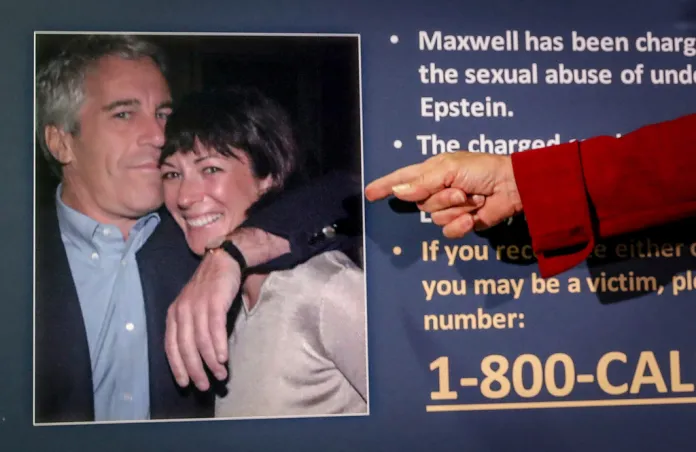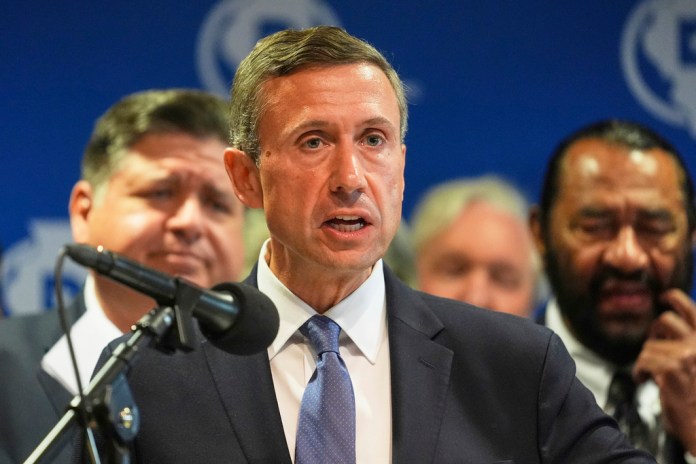Democrats prop up third party candidates in three House races – Washington Examiner
The article discusses the strategy employed by Democrats to support third-party candidates in three pivotal House races—Alaska, Ohio, and Montana—aimed at siphoning votes from Republican candidates. The Democratic Congressional Campaign Committee (DCCC) is signaling its allies to promote independent candidates to attract Trump supporters, which is crucial if Democrats intend to regain House control by flipping four seats.
In Alaska, Democrat Rep. Mary Peltola faces Republican Nick Begich, who has Trump’s endorsement. The DCCC plans to highlight Begich’s anti-abortion stance while providing support for third-party candidate John Wayne Howe to appeal to Republican-leaning voters. The goal is to capture enough votes in Alaska’s ranked-choice voting system to secure a win for Peltola in subsequent rounds.
Ohio’s Rep. Marcy Kaptur is also being targeted, as her district was won by Trump in 2020. The DCCC is leveraging advertisements for Libertarian candidate Tom Pruss to persuade Republicans away from Republican nominee Derek Merrin, presenting Pruss as a conservative outsider focused on traditional values.
Democrats are strategically employing these tactics to split the Republican vote in competitive districts where they face challenges, allowing them a better chance at winning these crucial House seats.
Democrats prop up third party candidates in three House races
Democrats are propping up third-party candidates in at least three House races in an effort to siphon off votes from Republican candidates.
The Democratic Congressional Campaign Committee is signaling to its allies in Montana, Ohio, and Alaska to push favorable messaging for independent candidates in an effort to appeal to Trump supporters.
If Democrats and Republicans maintain their current seats, Democrats will just have to flip four seats to regain control of the House.
Part of that strategy includes targeting competitive districts that former President Donald Trump carried in the 2020 election and boosting third-party candidates that fall closely in line with the former president. Democrats in these House races will have a difficult time winning these seats unless they can split Republican voters.
The DCCC took to messaging sites to unveil its plan to its outside groups, including its planned messaging and strategies. This is known as red boxing, a loophole in the campaign finance law where campaigns leave directions on their websites to describe the type of advertising they want, including direct phrases and photos.
Here is the breakdown of the DCCC’s plan of attack in these three House races.
Alaska
There is just one congressional seat in Alaska, currently held by Rep. Mary Peltola (D-AK), who was elected during a 2022 special election.
She is being challenged by Republican business owner Nick Begich. Trump, who won the state by 10% more votes than President Joe Biden, endorsed Begich at a Monday rally.
While the DCCC is focused on highlighting Begich’s anti-abortion stance, it is seeking to capture the votes of “white men under the age of 60 without a college degree” who likely lean Republican by propping up third-party candidate John Wayne Howe.
The DCCC red box signals that it wants to highlight Howe’s disbelief in man-made climate change, the need to rapidly expand oil production, and his opposition to any restrictions on bearing arms.
Already, Vote Alaska Before Party, which is funded by Democrat-affiliated House Majority PAC, released an ad that hits all the bullet points listed by the DCCC red box.
Alaska uses rank choice voting, so in order for a candidate to win, they need to capture at least 50% of the vote. By propping up Howe, Democrats think they’ll siphon votes away from Begich. They hope that when it comes to the second round of vote counting, Peltola will have captured the majority of the vote.
Ohio
Rep. Marcy Kaptur (D-OH) was elected to Congress in 1983. Last month, her seat moved from a “toss-up” to “lean Democrat.” She currently possesses a fundraising advantage and is polling ahead of her challenger, Republican Ohio state Rep. Derek Merrin.
However, Democrats aren’t taking any chances, as Trump carried Kaptur’s district in 2020.
The DCCC is directing its allies to build advertisements for libertarian candidate Tom Pruss. They are hoping to target Republicans who may be “open to persuasive information about the difference between Libertarian Tom Pruss and Republican nominee Derek Merrin.”
“Libertarian Tom Pruss is a conservative outsider who is focused on draining the corrupt Washington swamp, securing the border, lowering taxes, cutting government spending to address the deficit, and standing up to the radical left,” the red box says.
Meanwhile, they’re looking to paint Merrin as just another “Washington swamp politician” with a history of voting for raising taxes on working people while supporting tax breaks for corporations.
Montana
Rep. Ryan Zinke (R-MT) is the only Republican incumbent that the DCCC is seeking to siphon support away from and toward third-party candidates.
The DCCC is working hard to separate Zinke from Trump, who carried Zinke’s district by seven points in 2020. Zinke previously worked in the Trump administration as the secretary of the interior. While Zinke endorsed Trump last November, Trump has not endorsed Zinke for his election, as he resigned from his position after facing 18 federal investigations.
The DCCC wants to direct Republicans to libertarian Dennis Hayes, a “conservative outsider” who is “focused on draining the corrupt Washington swamp, building Trump’s border wall, eliminating the government overreach of the Bureau of Land Management, and always standing up to the radical left.”
So far, the Voter Protection Project, which is dedicated to fighting against Republican attacks on voting rights, spent $92,000 in October supporting Hayes with direct mail.
" Conservative News Daily does not always share or support the views and opinions expressed here; they are just those of the writer."




